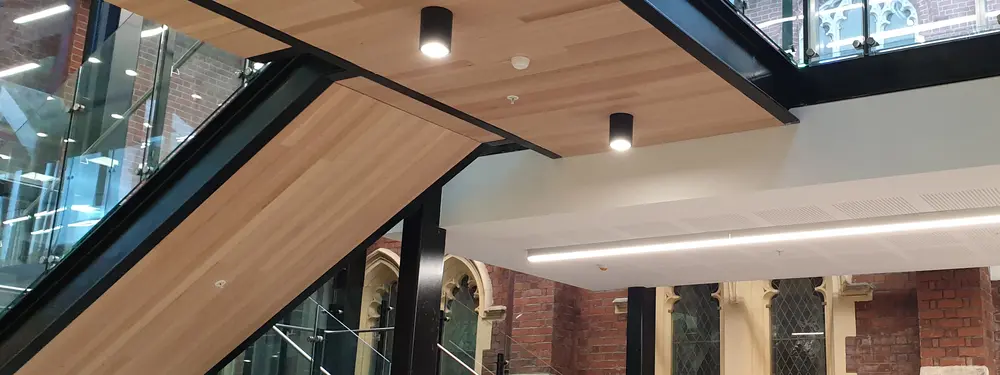News
Creative centre an opportunity for many
The past and future of Invercargill’s architecture converges in the Southern Institute of Technology’s newest building — a hub of digital and creative arts for Southland.
The $18 million Centre of Creative Industries has been built "in and around" the former St John’s Anglican Church building in Tay St and will be officially opened next month, when it will welcome students from film, animation, game design, fashion and music programmes.
SIT head of faculty, new media, arts and business Hamish Small said he was excited with the new premises.
While often historical churches were knocked down to make space for new developments, SIT had managed to keep the Anglican church almost intact, he said.
The only change to the space was the addition of columns to reinforce the structure against earthquakes, and the placement of two pod classes.
"What we have built is a contemporary purpose-built facility and we are very proud of it. The beauty of it is that we are going from brand new to 140-year-old history in the same space.
"We took a student group through the building and they were blown away. They are pretty excited to get in."
The cutting-edge technology installed in the historical space highlighted the institution’s focus on the significant growth in the screen industries, Mr Small said.
On the first floor, the atrium, the heart of the building, highlighted the concept of old and new side by side.
The church’s stained glass windows merged with digital screens which would be used to display students’ projects.
The complex also contained six sound-proof studios, DJ booths and an auditorium for students to practise, rehearse and make all the noise necessary to help them achieve their goals and projects.
Next to these, a multi-purpose room would house a green
screen and sound stage. That room was already sparking the interest of the film industry, which was experiencing a studio shortage.
"[That could] allow students to work in a real-world environment. It is a win-win, really."
The second floor and third floor of the building were filled with modern classrooms with computers and HyFlex technology
— a new delivery mode to increase learning options for students.
Students from those courses would have three options of learning — in their own time, remote, real-time or on-campus, Mr Small said.
The church had been transformed into an open-plan area to host events and concerts, and also housed a cafe, all available to the wider community.
The space would be a creative hub for the faculty and students, as well as the wider public, and could contribute to an enrolment increase of 20% on related courses, Mr Small said.
"We always come up with innovative ideas to keep a step ahead of other institutions."



